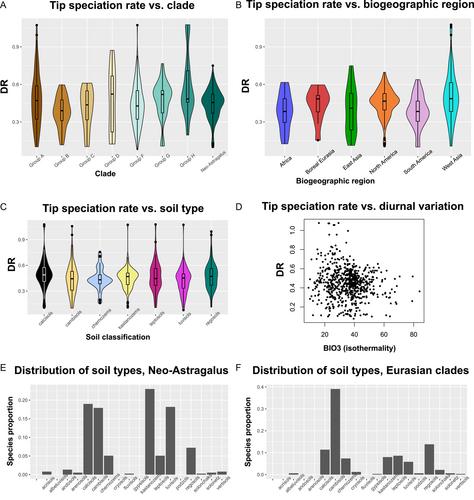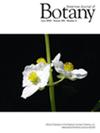Anatomy of a mega-radiation: Biogeography and niche evolution in Astragalus
Abstract
Premise
Astragalus (Fabaceae), with more than 3000 species, represents a globally successful radiation of morphologically highly similar species predominant across the northern hemisphere. It has attracted attention from systematists and biogeographers, who have asked what factors might be behind the extraordinary diversity of this important arid-adapted clade and what sets it apart from close relatives with far less species richness.
Methods
Here, for the first time using extensive phylogenetic sampling, we asked whether (1) Astragalus is uniquely characterized by bursts of radiation or whether diversification instead is uniform and no different from closely related taxa. Then we tested whether the species diversity of Astragalus is attributable specifically to its predilection for (2) cold and arid habitats, (3) particular soils, or to (4) chromosome evolution. Finally, we tested (5) whether Astragalus originated in central Asia as proposed and (6) whether niche evolutionary shifts were subsequently associated with the colonization of other continents.
Results
Our results point to the importance of heterogeneity in the diversification of Astragalus, with upshifts associated with the earliest divergences but not strongly tied to any abiotic factor or biogeographic regionalization tested here. The only potential correlate with diversification we identified was chromosome number. Biogeographic shifts have a strong association with the abiotic environment and highlight the importance of central Asia as a biogeographic gateway.
Conclusions
Our investigation shows the importance of phylogenetic and evolutionary studies of logistically challenging “mega-radiations.” Our findings reject any simple key innovation behind high diversity and underline the often nuanced, multifactorial processes leading to species-rich clades.


 求助内容:
求助内容: 应助结果提醒方式:
应助结果提醒方式:


